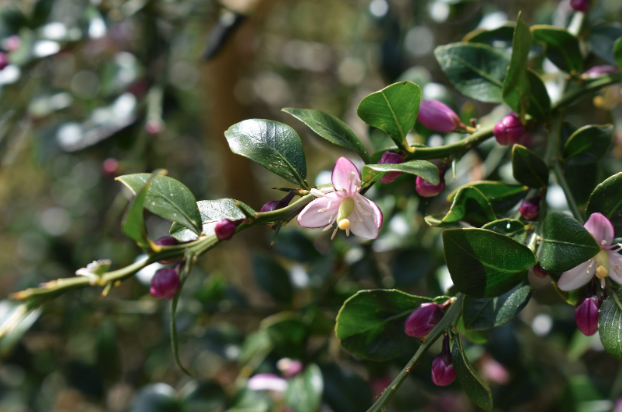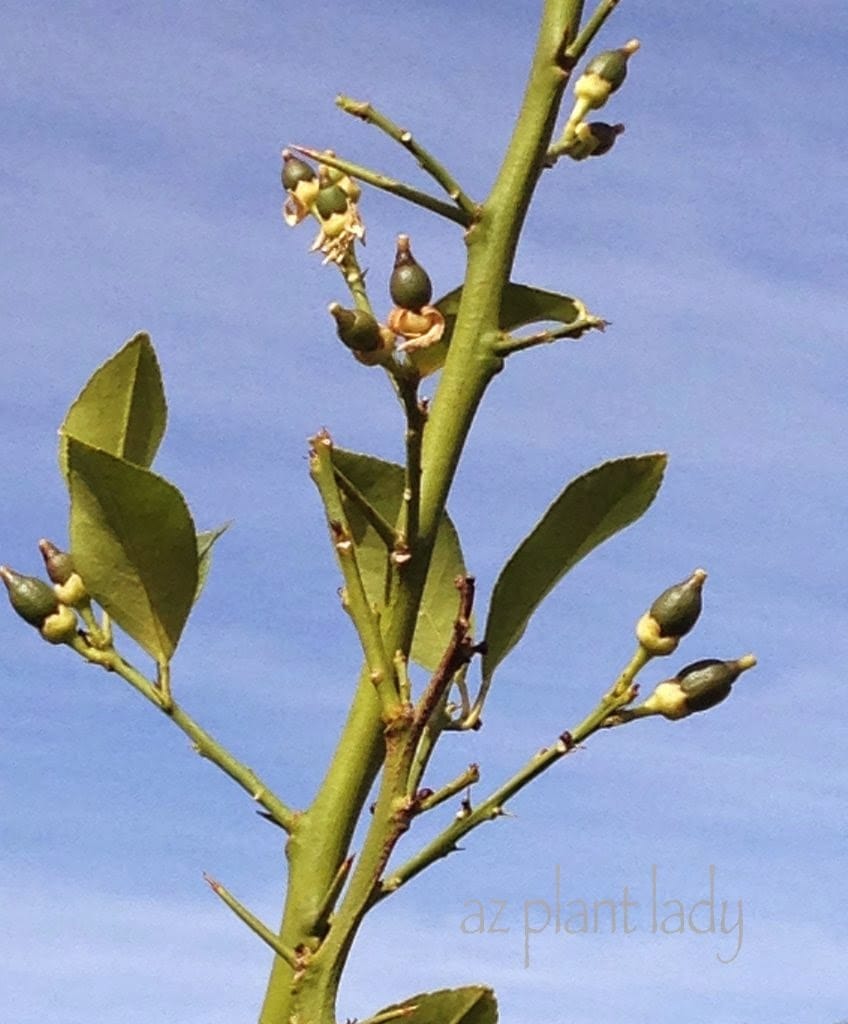Is Lime Fruit and Lime Blossoms Falling off a Tree Normal? I know lime fruits and lime blossoms falling off a tree can be depressing, but is it normal? Sometimes, it is normal for citrus fruits to ‘abort.’
Lime fruit and lime blossoms falling off a tree is often a normal process of self-thinning, also known as abscission. Lime fruits and lime blossoms falling off a tree is typical behavior for citrus fruit trees.
Limes produce fruits to propagate and ensure the survival of the species. It is the reason nature proliferates and breeds.
If the ambient conditions change from optimal even after blossoming, the lime senses that the chances of fruit surviving to maturity in the adverse conditions are minimal, so it aborts.
Is Lime tree blossoms and fruit fall off a lime tree ever normal

Lime trees produce more flowers than they can supply with nutrients. The tree often sheds immature fruit and blossoms to keep the number of fruits and flowers manageable.
Approximately 98% of lime blossoms and lime fruit can fall off a lime tree even if the farmer is carrying out the best agricultural management practices. Why?
Factors like temperature, soil moisture, soil fertility, and even disease play roles in lime fruit and lime blossoms falling of a tree.
While fruit and blossom shedding is sometimes natural and normal, other times, it isn’t, and the farmer must control it before it blows out of hand.
Normal fruit and blossom fall from a lime tree
As mentioned above, some fruit and blossom flower drop is a natural lime tree process. It is beneficial to produce the best quality of fruit. How do you know when the normal and natural dropping has exceeded, and it’s time to panic?
Natural drop often happens at the three stages explained below.
1. The first is of unpollinated flowers.

The first drop will be of unpollinated flowers after the lime tree blooming season is over. You don’t need to panic because unpollinated flowers wouldn’t have become fruit anyway.
The tree is ejecting them because unpollinated flowers waste the plant’s energy, saved for fruit. The plant will lose up to 80 percent of its flowers during this phase.
2. The second drop is after fruiting.
The second drop occurs when the fruit is walnut in size. After fruiting, there are normally so many fruits born at the same point. There is no way a tree branch can service all that fruit.
The tree must thin out some of that fruit so that the remaining fruit develop into larger and healthy fruit.
3. The third is toward the maturation of the fruit.
After the second fruit dropping, the tree will drop the third bunch of fruit. This usually occurs just as the fruits a ripen.
The tree does this to ensure that only the best fruit survives and reaches maturity.
Its nature’s way of ensuring that only the fittest survive, it’s survival for the fittest.
Unnatural fruit and blossoms fall from a lime tree

Sometimes lime fruits and blossoms drop for unnatural reasons, which is when it ceases to be normal. The most common unnatural of lime fruit and blossom drop is plant stress.
Plants become stressed you do not meet their basic requirement for water, nutrients, or weather range.
The reasons for premature fruit and blossom drop are explained below.
Premature fruit drop from a lime tree
1. Overwatering or inconsistent watering
Overwatering or too much rain can cause the flowers to remain wet for long, making them more susceptible to disease attacks, especially by fungus attacks. As discussed below, citrus scab fungal infection can be a real menace and even cause fruit and blossom drop.
Inconsistent watering predisposes the plant to shock. If you wait for the soil to dry, the tree will wilt and drop some blossoms and fruit. If your water after the soil became dry, the water would shock the plant, and the lime will respond with more fruit and blossom drop.
How to avoid over or underwatering
The key is to water when the soil is almost dry but not quite yet. Because it is difficult to estimate this soil moisture point, a farmer should invest in a moisture meter.
That way, the gardener knows that when the lowest critical moisture level is reached, it is time to water until the soil moisture meter rises to the critical maximum level.
2. Lack of nutrients, especially trace elements in the soil.
Flowers and fruits require considerable amounts of potassium, calcium, the essential nitrogen, phosphorus, and the remaining trace minerals.
Suppose the plant isn’t supplied with sufficient amounts of the nutrients. In that case, the tree will abort because there is no need to waste energy on fruit, which will not mature and grow into another plant.
It would help if a farmer fertilized before blossoming to keep the soil’s nutrient levels adequate to support blossom and fruit formation.
3. Pests and diseases cause lime fruit and lime blossoms falling off a tree
Some pest and disease infestations can cause fruit drop in the following ways.
Weaken the abscission layer
The abscission layer is the layer to which flower and, consequently, fruit stalks are attached. Suppose the layer is affected by the fungal, bacterial, or viral disease. In that case, the weakened abscission can longer support the fruit or flower, and thus the lime fruit will fall off a tree.
Citrus scab is a fungus that can attack the abscission layer and cause such harm.
Causing fruit root
Aphids, caterpillars, and some bacterial and fungal fruit infections are known to cause lime fruit rot. When fruit rots as part of the plant’s mechanism to ensure that only healthy fruit is left to mature, the infected and rotten fruits will be aborted and fall to the ground.
Sap feeding pests can reduce nutrients available for fruiting.
Sap feeding pests can cause lime blossom and lime fruit to fall by stealing the plant food before reaching the fruits and flowers. This results in the plant starving even though the roots absorb nutrients and the trunk transporting the nutrients.
When fruits and flowers don’t have the food supply over time, they die and, as a result, fall off the tree.
Citrus scab can attack lime flower petals towards the end of the blossoming period and cause the fruit to drop. Scale insects can also cause fruit and blossom drop because they are sap feeders, which can cause fruit and blossom drop.
Lime tree buds to lime blossoms process for lime tree

The flowers of a lime tree develop from flower buds.
- Flower buds of a lime tree develop at the tip of branches.
- The majority of buds are white to lilac in color.
- Flower buds open and develop efflorescence of lime flowers.
Lime fruit buds develop when conditions are best for fruit maturation. As aforementioned, lime buds develop with the sole purpose of becoming flowers then to fruit so ensure continuity of the species. Buds will therefore appear when the conditions are perfect for fruit survival.
Lime tree blossoms to lime fruit process for lime tree
Even though lime fruit develops from the flower, it doesn’t mean that flowers on your tree guarantee that you will have fruit. The lime flowers have to first be pollinated before fruits can develop.
If all factors and proper care is observed, lime fruits will develop from flowers. The general stages of fruit development start with bud formation, which develops into a flower, which finally develops into a lime fruit.
Stages of fruit development
1. Budding
Budding is the first stage of fruit development. Like all plant parts, flowers, and eventually fruit from buds. Buds occur at the tips of the branches.
Budding is often set off by favorable conditions in the environment around the tree. The soil water amounts, ambient temperature and humidity, and soil fertility need to be optimal and adequate for the tree flower bud to develop.
2. Flowering
Flower buds develop into flowers in the blooming season. Blossoms develop from flower buds. It is important to water more and ensures that soil has all the essential nutrients, especially potassium, during the flowering stage.
Flowering requires water for healthy blossom formation. It is also key information of nectar and the flower scents which attract pollinators.
3. Pollination
Pollination is the mechanism that fosters fertilization in plants. If your limes are growing indoors where there isn’t much wind or pollinators, you need to hand pollinate.
Many lime trees are self-pollinating and don’t require another lime plant for cross-pollination for fruits to form. This means that you can use the same lime plant pollen and transfer them to the stigma of the same plant.
4. Fruiting
After pollination and fertilization, the flower develops into a lime fruit. The baby fruits grow if undisturbed by water stress, pests, and diseases; the fruits will mature into lime fruits.
FAQs
Yes, flowers mature into fruit. However, flowers do not guarantee fruit because the flowers have to be pollinated. Only about 20% of flowers get pollinated naturally. The vast maturity fall off the lime tree as unpollinated flowers.
Also, flowers of immature lime trees are aborted by the tree shortly after blossoming. The young trees do not have a strong enough root system to support fruition.
While lime flowers turn into limes, it doesn’t guarantee that all the flowers on your lime will turn into fruit.
Limes can turn yellow and fall off for several reasons.
1. Over maturation
Limes are often harvested when they are still green. When you leave your limes on the tree for too long, they ripen and turn yellow. If you still don’t pick the limes, naturally, after ripening, they will fall off.
2. Overwatering
Overwatering can cause shock to the plant, which is manifest as fruit drop. Also, overwatering can cause root rot, which can reduce the uptake of nutrients by the roots, which, as mentioned above, would result in malnutrition and thus fruit drop.
3. Over Pruning
Excessive pruning can stress the citrus tree and remove too much of its foliage, forcing fruit drop. A severe pest infestation can also stress the tree enough to cause fruit drop.
You can stop citrus fruit from dropping by taking care of your lime trees. You may try Plano fix, an artificial fruit and blossom booster.
Dwarf lime trees produce fruit after 2-3 years after grafting. Naturally, it takes a lime tree over six years to mature and produce fruit.
Conclusion
I know that lime fruit and lime blossoms falling off a tree can be disturbing for any farmer but with the tips above any farmer can beat this challenge.
